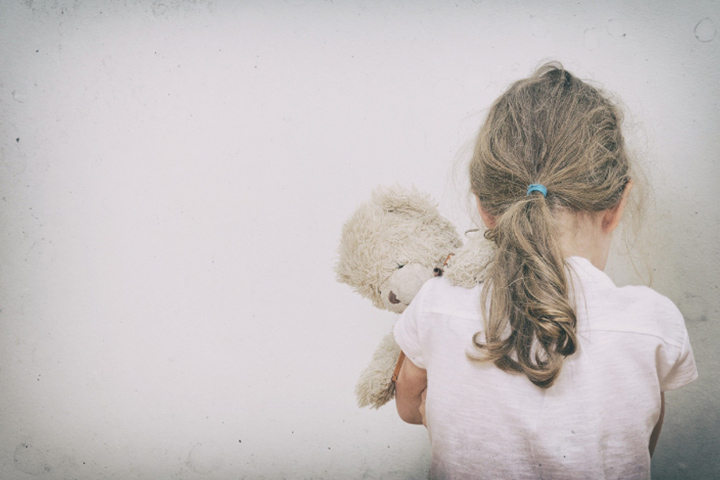Curious behaviors begin as soon as your child learns to explore the world around them. While some of these behaviors may be completely harmless, others can put the parents on edge, accentuating the need for toddler discipline. With increasing milestones, curious child behaviors also include disarrayed emotional expressions, often presented as tantrums. However, parents can ease their child’s curiosity and teach them right from wrong without having to use harsh methods of punishment every time the child makes a mistake or throws a fit. The following article lists a few appropriate discipline ideas for your toddler.
Why Is Discipline Important For Toddlers?
Discipline refers to the process of learning through instruction. It is essential for growing children to learn the basics of emotional expression and self-control. Toddlers learn to behaviourally express and label emotions through experiences and observations at home. The inability to express feelings or lack of self-control can lead to tantrum behaviors in children. Reinforcing bad behavior through attention or permissiveness at home can lead to more harm as they grow older.
Introducing toddler discipline allows your child to learn self-regulative behavior through a paired understanding of events and consequences. This lays the developmental foundation for their social and emotional maturity (1). A disciplined role model at home will drastically influence the child’s future self-discipline, making them more accountable, positively curious, empathetic, self-reliant, and law-abiding as they mature. In addition, teaching discipline at home may be influential in protecting the child from any threat (2).
An effective toddler discipline strategy also creates a long-lasting change in the thought process. Instead of focusing on what not to do, positive discipline focuses on enabling the child with better choices to handle similar situations in the future. It follows the appropriate use of positive reinforcement, which helps them form an association between their actions and consequences (3).
When To Discipline A Toddler?
Toddler discipline can begin as early as birth and should be designed to adapt to the growing needs and maturity level of the child.
- Birth to two years: In the initial stages, the infant explores their world through observation, sensation, and exploration. In this stage, the child can engage in behaviors that may put them in danger, such as grabbing (at the hair, eyes, or nose of the caregiver), scratching, and chewing on small/soft objects. Toddlers who can crawl or have just begun walking may also explore things by putting them in their mouths. They are also constantly under the threat of falling down the stairs or the bed as they explore due to a lack of depth perception. However, being a positive role model, using loving words, attention to their behavior, and an occasionally firm ‘no’ to injuring behaviors can help build the foundation for discipline (6).
- Two to six years:The second year is often considered the ‘troubling twos’ as this is the age when children begin to walk independently and develop their language skills. Thus, exhibiting the need to do things on their own and explore their surroundings, trying to understand their limits. The period between two to six is characterized by behaviors of banging, moving, or throwing objects; fiddling with locks, switches, or plug sockets, climbing, tearing, or breaking things; exploring cupboards and drawers; hitting, asking questions; and exhibiting defiance. The child may begin to express their needs openly but do not yet know how to distinguish or describe emotions, thus exhibiting tantrum behaviors requiring disciplinary measures (7) (4).
- Beyond six: Children beyond six understand emotions, behaviors, and consequences. Appropriate toddler disciplining paves the way for them to become more responsible as they grow older. This period requires the continued use of several disciplining strategies from their toddlerhood to ensure they gain the skills of personal responsibility and self-regulation (4).
How To Discipline A Toddler?
An effective disciplinary strategy requires consistency, fairness, and respect. In addition, it should be definitive of the healthy bonding between the parent and the child. Here are 15 effective ways you can reinforce toddler discipline at home.
1. Be a role model
Children learn better by modeling parental actions than by following instructions or trying themselves. Set an example by being calm in emotionally distressing situations instead of cursing, swearing, hitting, or throwing things. Follow the same rules you want your children to follow, and use appropriate labels to express your emotions. Exhibit alternative methods of expressing anger, such as silently pondering over it, taking a time out, or working out to lower your annoyance before returning to the problem. They will learn from how you resolve conflict and express emotions and follow suit.
2. Reinforce good behavior
Observe your child and keep track of their excellent behaviors through appreciation and tokens. An occasional appreciation for positive efforts or rewards will go a long way in nurturing good habits in your child and improving their self-esteem (8). Reinforcements can include hand-drawn smileys and stars, an extended fifteen minutes of game time, or simple words like ‘thank you,’ ‘I appreciate it,’ or ‘well done.’ They need not include sweets, snacks, toys, or expensive gifts. When a parent reinforces behavior, it makes it more likely that the child will engage in that behavior again in the future.
3. Use nurturing words and actions
Connecting with your child is essential to foster discipline. Nurturing words of appreciation, bonding activities, and use of affirmations such as ‘I trust in you,’ ‘you are important to me,’ ‘it is okay to make mistakes,’ etc. will go a long way in reassuring a child of their parent’s love for them. Studies have proven that toddlers learn discipline better from a nurturing parent (5).
4. Give a time out
A time-out may be an effective strategy to help your child to sort through their emotions and contemplate their behavior. In addition, it may be beneficial when your toddler engages in aggressive or whiny tantrum behaviors. However, precautions must be taken to avoid injuries when choosing the time-out area. Some safeguards include using a sturdy adult-sized chair that is too heavy for the child to be moved around and selecting a room free of gadgets, toys, or other objects that can be broken, thrown around, or used to harm oneself. Ensuring that the room has ample enough space with high window locks, no fireplaces, and no door locks is also essential to keep an eye on the child.
Lora Horn, a behavioral health content strategist in San Diego, believes in enforcing time outs for her three-year-old daughter. She says, “The rule is ‘time out’ starts when you can be quiet’. She was only three-years-old. She had to be quiet for three minutes. But a time out hit her hard, and so for a little while, she would bawl. But she also was used to my not doing anything until I was really mad at her, so she had to learn that things were still okay. She eventually stopped crying and I made sure it was a quick three minutes, and then we read a book or something so she knew I wasn’t still mad (i).”
5. Set routines
Having a fixed daily routine will be helpful for the child to keep track of their responsibilities. In addition, it will provide them with a sense of stability and clarify expectations. Practices also help you keep track of your expectations from your child and ensure that they learn age-appropriate behaviors and tasks.
6. Ignore bad behavior
Ignoring is an active parental process where you consciously avoid responding positively or negatively to your toddler. Parental ignorance may help discourage certain destructive behaviors in the child, primarily if they are performed to seek attention. Ignorance is best for situations such as whining, crying, or screaming, as negative attention such as yelling or screaming at your toddler may fuel their behavior instead of modifying it. While it may be hard for you to ignore bad behavior, it helps the child learn to self-soothe and regulate themselves without you reinforcing that negative behavior gets them attention. However, behaviors such as banging their head, biting, or throwing objects must not be ignored as they may pose a danger to you or your child.
7. Eliminate temptations
Toddlers are curious and want to explore their surroundings to understand their limits and boundaries. However, as parents, you must ensure this exploration is safe and well within the boundaries. Defining safety boundaries requires the removal of temptations from the child’s surroundings. These include keeping electronics, sharp tools, and small objects away from their reach. It is also best to follow child safety guidelines within the house and ensure that electrical sockets, door locks, or stairways are child proofed.
8. Distract
Distraction can be handy for toddler discipline strategies between the ages of one and three when they are engaged in behaviors that may harm them. For example, distracting your child with a toy or a song while they reach out for a sharp tool you have out may help prevent them from getting injured without causing them to be upset about losing their target object.
9. Avoid spanking and yelling
While punishment may seem to bring about an instantaneous change, it has detrimental effects on the child’s self-control and patience. Punishment encourages fearing the consequences of their actions and engaging in defensive behavior (such as aggression or withdrawal). Spanking, shaking, or slapping your child may make them feel uncared for and increase defiance. While it may immediately stop your child’s behavior explicitly, it can also spoil your relationship with your child and increase mistrustful behaviors. In addition, spanking or shaking the child may also result in physical injuries to the child. Studies indicate that harsh verbal discipline, such as yelling and belittling the child, can lead to problems such as depression and aggressive tendencies. Studies also suggest that harsh parental punishments can promote violent behaviors and mental health issues in children (9) (10).
10. Explain consequences
Consequences are responses following behavior and can be positive or negative. Fair consequences following an action help your child distinguish right from wrong and thus need to be prompt. These can be decided based on the child’s behavior; for example, you can add an extra chore to your child’s list if they purposely skipped all assignments for the day or reduce a bedtime story if they are late. Age-appropriate consequences and their explanation help children understand the need for corrective measures and ensure self-regulation.
11. Set clear expectations
Children need to understand what part they play in the family dynamics and thus may either overly indulge or under-participate in the household. Therefore, it is essential to provide your child with clear rules and realistic goals for them to achieve. For example, packing their colors after they are done painting, not running down the stairs, or putting their toys in place are clear indicators of what is expected of them. However, it is vital for parents to also adhere to a set of boundaries to present their children with appropriate examples.
12. Provide choices
Children expect a certain level of freedom and independence as soon as they begin exploring and may throw temper tantrums when they feel restricted or bossed around. Giving your child the flexibility of choices ensures they do not engage in a power struggle with you. Children need to be able to choose regularly to feel in control of their lives and gain self-confidence. These small decisions, such as what they would like to eat or wear for the day, goes a long way in helping them make appropriate decisions later in life.
13. Acknowledge feelings
Toddlers have underdeveloped feelings and are just learning to cope with big emotions. However, they cannot label or express their feelings entirely, which can often frustrate them, leading to fussiness and irritation. It is crucial for children to feel seen and heard whenever they get overwhelmed by their feelings. Thus, as a parent, you must offer them a safe space to express themselves whenever they feel like complaining and ask the right questions to help them label their emotions.
14. Use the 3Rs of positive discipline
A cheerful toddler disciplining style follows three simple steps. First, the toddler is removed from the environment that provokes their emotional outburst. This allows them to calm themselves down and think about their feelings. Secondly, the toddler is given an equitable space to reflect on their behavior with a proper discussion on their emotions. Once done, the child could understand their mistakes and where they originated from, effectively labeling their feelings. Here, an appropriate positive punishment can be used to reinforce their behavior management learning. Finally, the parent tries to reconnect with their toddler through positive reinforcements where they combinedly engage in an activity of their choice and liking (11).
15. Take a time out
Toddlers respond better to discipline when they understand the logical reasoning behind your acceptances and denials. However, this is hindered when you are too frustrated to respond calmly to your child’s needs. As a parent, you must choose your battles and remove yourself from the situation when you feel your temper tantrum rising. Distracting yourself with music, exercises, chores, or a phone call for a while before returning to your child can help you avoid unnecessary lash outs and keep you from feeling guilty.
What To Do If Your Toddler Won’t Listen?
Misbehavior and stubbornness in children may occur due to attention-seeking, the need for control or power, self-preservation, negative role modeling, revenge-seeking, and feelings of inadequacy (12). Here are a few strategies that you can use to handle your stubborn toddler.
- Set clear limits and keep them informed of their consequences.
- Use positive request statements rather than instructions to obtain cooperation.
- Familiarize yourself with your toddler’s triggers to better anticipate an incoming tantrum.
- Avoid encouraging your child’s tantrums by giving up or giving in to it.
- Use humor to distract your child from their defiance.
- Monitor your child’s behavior towards others and remove them from the environment if they threaten others.
- Take time to appreciate yourself for excelling as a parent despite the power struggles.
Toddler discipline is a practical part of growing up as it helps children control their impulsivity and behave in more positively curious ways while also ensuring their safety. Defiant toddlers react in negative ways to express their needs for attention, security, power, self-preservation, and support. Toddler discipline can be effectively incorporated into a toddler’s life through removal, reflection, reinforcement, and reconnection. Stubbornness in toddlers can be dealt with using clear boundaries, positive requests, time-outs, and ignorance.
Key Pointers
- Toddlers observe and model learned experiences that they follow at home.
- Toddler discipline influences the child’s accountability, positive curiosity, empathy, self-reliance, and morals.
- Effective toddler discipline is designed to adapt to the child’s growing needs and maturity level.
- Reinforcements, distractions, time outs, nurturing words, use of choices and clear expectations help effectively increase toddler discipline.
Navigate the world of toddler discipline with the 10 Commandments in this informative video. Unlock essential insights and strategies to foster a harmonious and nurturing environment for your little one.















